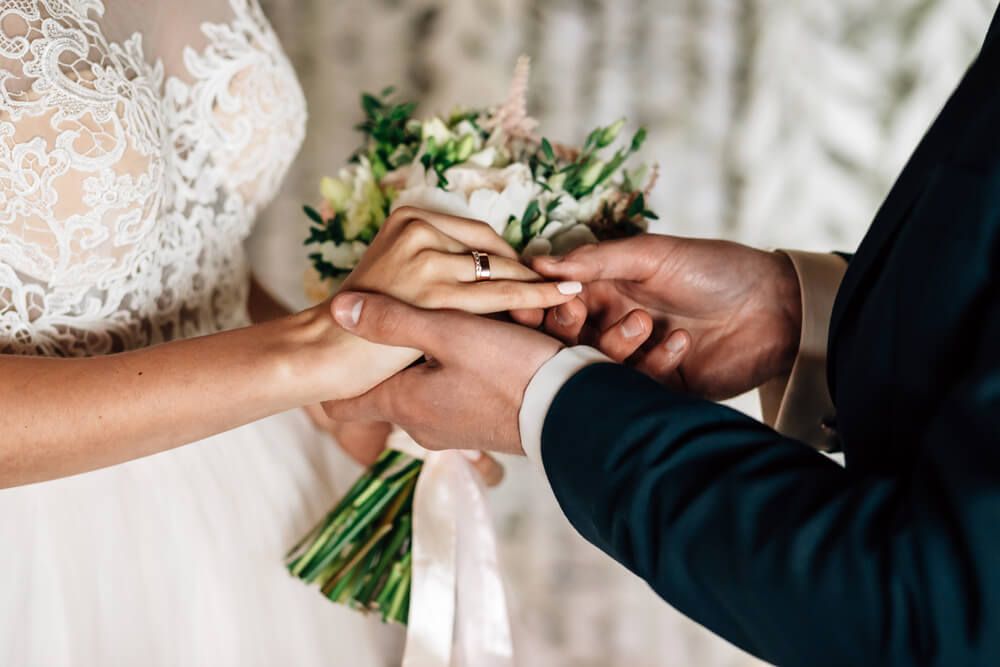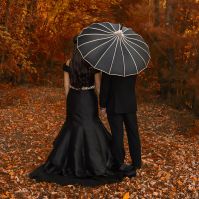
Few moments in a wedding ceremony are as meaningful as the exchange of wedding rings, a gesture that symbolizes eternal love, unity, and commitment. But what hand do you wear a wedding ring on and why? Around the world, this tradition takes many forms, shaped by culture, faith, and personal meaning.
What Finger Do You Put the Wedding Ring On?
Different cultures and customs have different beliefs about which finger is most appropriate for the wedding ring, adding layers of meaning and symbolism to the tradition.
Western Tradition
In many Western countries, such as the United States and the UK, the wedding ring is traditionally worn on the left hand. This custom is rooted in the belief that the left hand’s fourth finger, often referred to as the ring finger, contains a vein that runs directly to the heart, known as the vena amoris, or "vein of love."
Jewish Tradition
In Jewish tradition, the wedding ring is worn on the right hand, but there are nuances depending on the customs of different communities. The groom typically places the ring on the bride's index finger during the ceremony, symbolizing the connection between the couple and their faith. After the ceremony, many brides move the ring to the left hand’s ring finger for everyday wear.
Indian and Hindu Customs
In India, wedding ring traditions vary by region and culture. In Hindu weddings, the primary symbol of marriage is a sacred necklace called the Mangasultra, which is worn by the bride around her neck.
The wedding ring, if worn at all, is generally placed on the right hand’s ring finger, signifying the importance of the right side in many Indian cultures. In some South Indian traditions, men wear the wedding ring on the right-hand ring finger, while women may wear toe rings (bichiya) as a traditional symbol of marriage.
Eastern and Orthodox Christian Cultures
In Orthodox Christian and Eastern European traditions, the wedding ring is also worn on the right hand’s ring finger. In these cultures, the right hand is considered the dominant hand, and wearing the ring on this hand is thought to symbolize the couple’s bond, their vows, and their place in the community.
In Russian Orthodox customs, both engagement and wedding rings are worn on the right hand’s ring finger, and moving the ring to the left hand is traditionally associated with mourning or widowhood.
Latin America and Southern Europe
In countries such as Spain, Italy, and much of Latin America, wedding rings are typically worn on the right hand’s ring finger. The engagement ring may be worn on the left hand before marriage, and then the wedding ring is moved to the right hand after the ceremony.
Personal Choice and Modern Trends
Modern times have led to new customs and traditions. Tattoo rings, silicone bands, or even necklaces are alternative options for couples who may not wish to wear a traditional ring or seek a unique form of expression. Some same-sex couples or non-traditional partnerships may choose to wear their rings on a different finger or hand entirely to reflect individuality or equality.
When Do You Exchange Rings During the Wedding Ceremony?
In most traditional ceremonies, the ring exchange usually takes place after the vows are read but before the couple is officially pronounced married. The wedding band is typically placed first, followed by the engagement ring.
Traditions vary, however, depending on cultural or religious influence and the preferences of the couple. Some couples may choose to incorporate a ring warming ceremony, where guests pass the rings around to offer blessings before the official exchange. Others may choose to have a handfasting ceremony instead of a more typical ring exchange. During this union, the rings are tied with a ribbon and placed on the couple’s hands to emphasize the unity and commitment.
The Role of Ministers in Celebrating Wedding Ring Traditions
Regardless of which hand you wear a wedding ring on, the act of exchanging rings represents a lifelong promise of love and fidelity. As a wedding officiant or minister, guiding couples through this moment is a privilege and a profound responsibility.
If you feel inspired to play a meaningful role in wedding ceremonies, the Universal Life Church makes it simple to get ordained legally online. Become a minister today and help couples celebrate their love, unity, and the traditions that bind them together for a lifetime.



